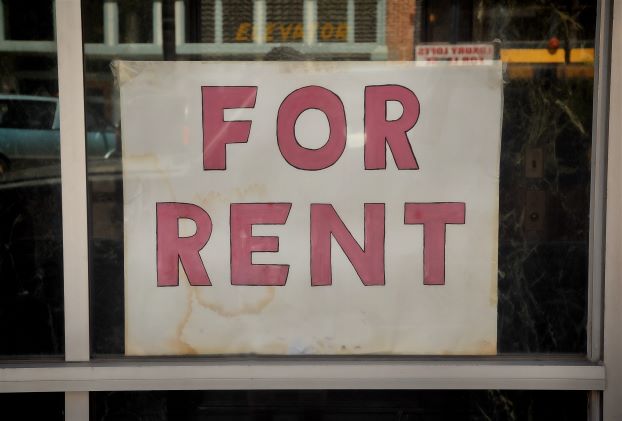At their Tuesday, July 12th meeting, the Santa Monica City Council heard a number of proposed measures from the Rent Control Board (RCB) for the November 2022 ballot. July is often the time this happens, as it is the deadline for preparing ballot language and assigning ballot designations.
RCB Commissioner Caroline Torosis, a candidate for city council this fall, was on hand to ask the council to put a new cap on the annual rent increase. “This year, our constituents are facing an untenable six percent increase in their rents,” she said. “I’m asking you to place, on the November ballot, a charter amendment to lower the general adjustment to three percent; to pass an ordinance tonight limiting rent increases from September 1 to the November election to three percent … and please place on the ballot our Rent Control Board’s ‘Good Governance Initiatives,’ including a citywide rent registry to ensure we prevent short-term rentals from overtaking our housing supply.” She informed the council that Oakland recently passed a three percent cap and reminded them that the RCB already has a petition in place landlords can use to claim hardship.
The proposed ballot measures Torosis called for were first up for consideration, and the RCB’s General Counsel Allison Regan was on hand to present the Board’s arguments for them. She explained that the RCB does not currently have the authority to further cap rents lower than the six percent allowed by 2012’s Measure GA in times of stated emergencies such as the ones we’ve been facing with COVID-19 and high inflation. The measure would allow the RCB that power. It would also modify the owner-occupied exemption from rent control to require owners to occupy their desired unit for at least three years to tamp down on speculative buying and selling of properties in the short term.
One of the biggest tenets of the RCB’s proposals is the establishment of a Rental Registry of non-rent controlled units available. Regan informed the council, “This recommendation was placed as a proposed charter amendment, but we have since learned that the city council does have the authority to enact such a registry through an ordinance.” She added, “This method is probably preferred because that would allow modifications to the current language, which would not be allowed as a charter amendment. It would also allow greater public input, not just from the public but also from staff.”
Mayor Sue Himmelrich was quick to compliment the rental registry concept, saying that while people talk about hitting landlords with “vacancy taxes” for allowing units to stay unrented, you can’t really implement such an idea unless you know where those units are. She cited Vancouver, Canada as a city that has implemented a vacancy tax and says it helped bring rents down about 20 percent.
“If that [apartment owner] information is collected, who’s privy to that information?” asked Councilmember Christine Parra, adding that she’s been hearing concerns about privacy.
But after a few minutes of discussion, the council removed this particular element of the overall RCB ballot measure in order to discuss it later as an ordinance. They then went on to consider Himmelrich’s motion to place the three percent cap on the annual rental adjustment on the November ballot.
Councilmember Oscar de la Torre expressed concern for what most call “mom and pop” landlords. “I want to make sure any analysis that we bring forward on this question takes them into consideration,” said De la Torre. “What I see happening in Santa Monica is people aren’t – if these ‘mom and pops’ can’t pencil out – they end up selling.” He then described a cycle he fears is occurring where the larger, wealthier interests that purchase from the small building owners get frustrated that they aren’t making a large enough return on rent controlled units. He predicts that larger building owners then begin harassing folks in those units to leave.
De la Torre’s colleague Phil Brock also expressed sympathy for landlords if restricted to a three percent cap on rent increases. “The cost of a plumber has skyrocketed; the cost of an electrician has skyrocketed; the cost of a gardener has skyrocketed,” said Brock. He worries that if this level of inflation continues for another four years or so, landlords will be unsustainably behind in keeping up with the growing expenses they incur in caring for their buildings.
Brock also went off on the RCB’s $140 a month cap on rental increases, saying that capping wealthy renters in high-end apartments isn’t helping those who are barely making it in average apartments that share the same $140 a month cap. Brock would rather the whole rent control system be analyzed to see what can be done to subsidize those having a tough time rather than artificially put the same percent increase or cap on everyone, despite differing economic situations. Brock then went after the RCB itself, suggesting critically it needed to change its ways and tighten its belt.
Someone claiming to be in a tough position was Councilmember Lana Negrete, who herself benefits from limited general adjustments as a renter. However, she landed more in agreement with de la Torre and Brock that it’s more important to keep “mom and pop” landlords healthy financially so they don’t have to sell their buildings. “There’s costs to bear on the other end as well, and we have to be fair so we can keep those landlords having those buildings in Santa Monica.” Negrete suggested programs like Preserving Our Diversity (POD), which provides rental subsidies for seniors so they can age in place, should be expanded to help renters in lieu of limiting landlords to a three percent annual increase in rents.
Brock moved for a ballot measure with a four percent cap on annual rental adjustments, and it was seconded by de la Torre. Himmelrich made a substitute motion to go with the three percent, and it was seconded by Councilmember Kristin McCowan. Himmelrich’s motion was passed, and the three percent cap will appear on the November ballot as requested by the RCB.
The RCB wasn’t as fortunate with a few other requests of the council. Their effort to match the 12-year term limit (up from 8) given to the city council, county supervisors, state legislators, and – with council approval – all city commissioners, was rebuffed in the name of encouraging more new blood on the RCB. The RCB’s request to freeze rents in a stated emergency was redirected to be a power only held by the city council. And finally, the Board’s desire to require owners to occupy a unit in their building for three years – an effort to cut down on evictions based on false pretenses and overall speculation – was cut down to two years. It was unclear when the council intends to return to the issue of creating a rental registry of units not under rent control.
DISCLOSURE: The author of this article — yours truly — served on the Santa Monica Rent Control Board from 2010-2018, and was the co-author of 2012’s Measure GA, which was the initiative that tied the annual rent increase to 75 percent of CPI and established the initial cap at 6 percent.
Stay informed. Sign up for The Westside Voice Newsletter
By clicking submit, you agree to share your email address with Westside Voice. We do not sell or share your information with anyone.








